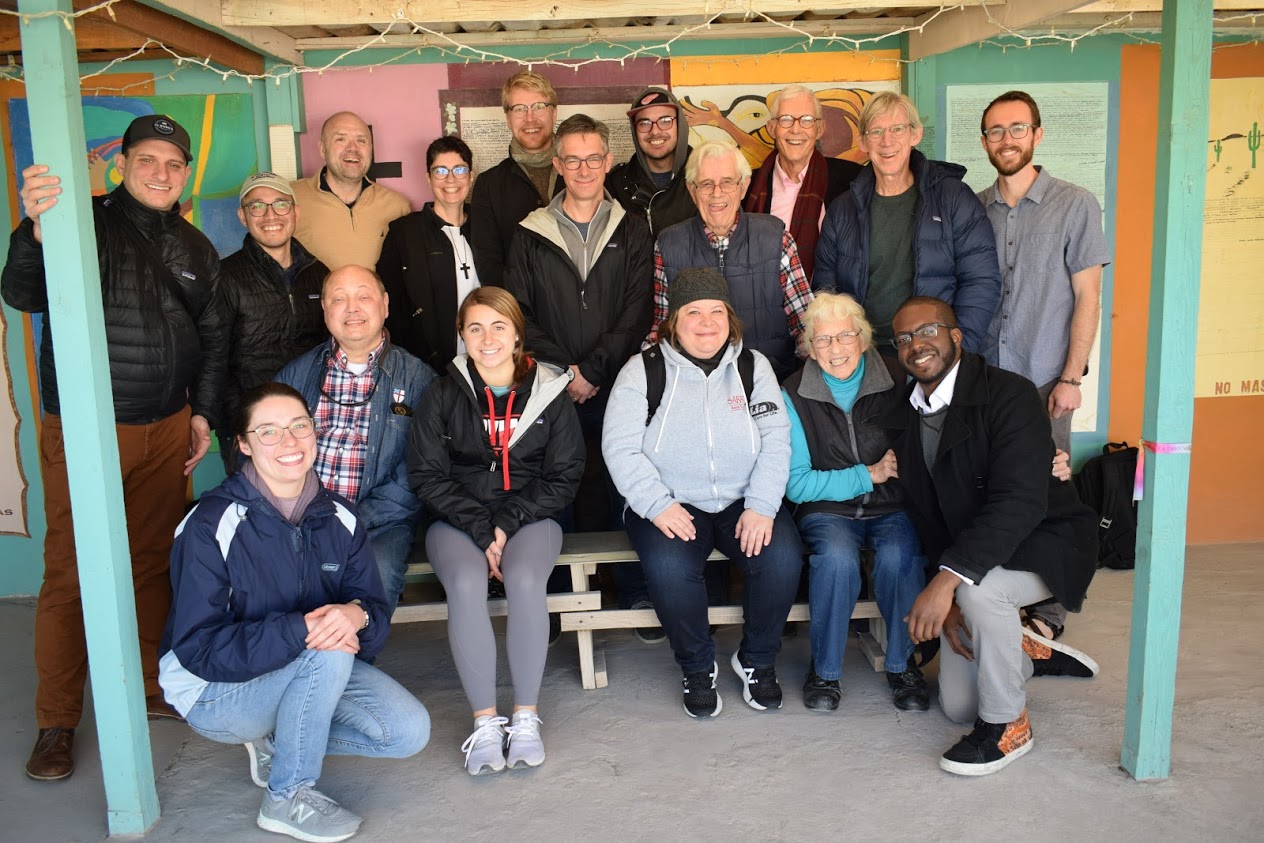This story was originally published in the Union Collective Spring 2020 Issue
A group of EDS at Union students, staff, and one board member arrived at Casa Vides, a house of hospitality for migrants and refugees operated by Annunciation House, in El Paso, Texas, on January 10. For six days, they participated in a “Border Awareness Experience” aimed at introducing the group to the culture and realities of the many people and groups that live and work in the border region of El Paso. This pilgrimage was part of a semester-long focus on the experiences of immigrants and asylum-seekers, especially unaccompanied children. Participants were asked to reflect on this experience, and shared their thoughts with Union Collective.
What is an image that will remain with you from this pilgrimage?
Mary Barber, M.Div. ’21: The image that is sticking with me from the trip is the wall itself, the steel Bollard-style structure we saw, peered through, and touched. Through it is the Anapra neighborhood of Juarez, an impoverished shantytown created by U.S. policies that led to the flourishing of maquilas (sweatshops, most for U.S. companies) on the Juarez side of the border. There was suffering through that wall, surely, but all the life was over there. The U.S. side was desolate, military, dead. And it all felt so wrong, in a stark and tangible way. The image stays with me because there are borders and walls everywhere in our world. I was reminded on this trip of the fencing and razor wire that kept my patients confined inside the state psychiatric hospital where I worked for eleven years as a psychiatrist. That fencing dehumanized the staff as well as the patients, just as the border wall dehumanizes us, as well as immigrants.

Galvin Mathis, M.Div. ’22: The image that will remain with me is the cross made of fencing materials holding the dusty, well-worn shoes of migrant children found in the desert. It reminds me that these physical barriers are keeping me and us from seeing Jesus.
In reflecting on the informational presentations, what was something you wish the general public knew?
Carl Adair, M.Div. ’21: I wish that more Americans understood that the crisis at the U.S. Southern border is the direct result of U.S. economic and military policy over the past five decades. “America First” isn’t a solution to the migration crisis: it’s the cause. The political instability and gang violence in Central America is a legacy of U.S. support of right-wing paramilitaries and their dirty wars; the punishing inequalities in Mexico and the political power of the cartels are due in part to U.S. strong-arm tactics that have been narrowly focused on U.S. advantage. After what I’ve learned on this trip about how the U.S. has spent decades pursuing its own interests without hardly giving a thought to the effects of those choices on the people in Mexico and Central America—effects which are pushing people out of their homes— it makes me furious and sad to hear American media and politicians framing the migration crisis as something that is happening to us.
Where did you find hope on this pilgrimage?
Nicole Hanley, M.Div. ’22: In Juarez, a women’s sewing cooperative was born out of a prayer group started by Roman Catholic nuns for poor women. But the origins of that prayer group betray the extreme poverty and devastation: the original site was a garbage heap that starving women and children were combing through for food. The nuns realized quickly that faith demanded justice, and so they helped form a sewing cooperative that would allow these women to earn a living wage, together. Everything that is sold is split equitably among the women. I was personally struck by their faith and their joy; the most powerful part of their story for me is how they are able to earn wages in solidarity together but also that they are able to care for their children close by where they work. This is in contrast to, thanks to NAFTA, when working in the U.S. factories, they had to leave their children for extremely long days and low wages, often a distance away from home.
This pilgrimage included learning about and standing near the immigration detention centers that exist across the country. What was your response to these centers?
Ronnie Ward, M.Div. ’22: The desperation and pain of those confined in the detention center. That’s a nice-sounding name for prison or internment camp. Learning of the heart-breaking conditions makes me ashamed and then angry toward what the U.S. government is doing in my name. I don’t agree and want to see a change in policy. As my Muslim friends say, Inshallah.
What is something you hope to learn more about as you return to New York?
Nicole Hanley: I am leaving behind my privilege to choose whether I will work for immigration justice or not, and I am taking with me the gospel imperative to work for justice through the work of accompaniment. I now cannot unsee the human rights issues that have been in play for decades in the U.S. Because of the power of stories and the witness I encountered on this pilgrimage, I am a changed person with a heart bent toward immigration justice.
